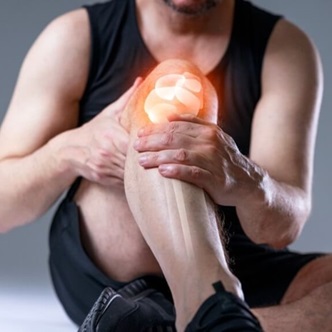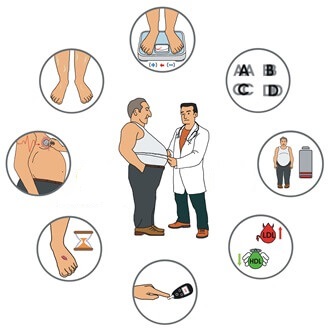
Centrokinetic has a Department dedicated to Neurological Diseases, in which vertebral elongations are performed. It covers an area of 120 square meters and is equipped with the latest equipment, which meets the needs of our patients and is necessary for optimal treatment. Our physiotherapists are licensed and overspecialized in physiotherapy and special motor skills, having numerous courses, among which we mention:
- ERGON technical course
- KinesioTaping
- Flossing band
- Dynamic tape
- Yumeiho Therapy Course
- Aquashape Fitness Scandinavia Workshop
- Calarco Method kinesiotaping course
- Osteopathy courses
- Manual Therapy Courses
Services - Department of Neurology
- An initial check-up with the neurologist: first symptoms, a check-up with recommended investigation ticket or direct diagnosis
- A check-up with the recovery physician: after establishing the diagnosis, in order to concretize a recovery program
- Additional investigations: ultrasound or MRI.
- Control check-up: after the recovery stage, after surgery or after performing procedures both at the neurologist and at the recovery doctor
- EMG : Dr. Bogdan Rotaru and Dr. Adina Matei are overspecialized in electromyography
- EEG: Dr. Simion Laurentiu being specialized in this investigation
- Transcranial electrical stimulation: is a simple, painless method of treatment that uses electrical flow around 1mA intensity, and induces long-term positive brain changes.
- Dr. Rotaru Bogdan - neurologist, with over 15 years of experience, overspecialized in electromyography, with numerous national and international courses
- Dr. Laurentiu Simion - neurologist, with over 10 years of experience, overspecialized in electroencephalogram (EEG)
- Dr. Tache Georgiana - recovery physician, with over 30 years of experience, specialized in the recovery of neurological diseases
- Dr. Adina Matei - recovery physician, with over 10 years of experience, and competence in electromyography.
- Dr. Edis Mustafa, recovery physician with over 15 years of experience in recovering from neurological disorders, overspecialized in transcranial electrical stimulation
Why is rehabilitation after stroke important?
In Romania, Strokes are the No. 1 cause of adult mortality, at the same level as coronary heart disease, qualifying as a public health problem. At least as important is the fact that strokes are the most common cause of disability - not just physical disability, but also mental (about 20-25% of first stroke survivors develop some form of dementia in the next 5 years).
There are two main types of stroke:
- Ischemic stroke - occurs when a blood vessel leading to the brain becomes blocked.
- Hemorrhagic stroke - occurs when a blood vessel in the brain fails.
Medical recovery plays an important role in this condition, having several purposes:
- Preventing another stroke
- Prevention and treatment of medical complications
- Pharmacological facilitation of the neuro recovery process
- Learning how to relieve symptoms
- Consolidation and improvement of motor control, balance, and coordination in motor actions
- Acquiring self-service activities by promoting palliative movements
- Automation of usual movements
- Active and conscious inclusion in verbal activity
- Conscious inclusion in compensating for speech and comprehension defects
- Application of intervention methodologies and techniques on attention, memory, spatial perception, calculation, and praxis depending on the heterogeneity of cognitive deficit
- Management of post-stroke depression and anxiety
- Comprehensive analysis and interventions on psychosocial functions
What is the recovery process after a stroke?
Physical therapy
Centrokinetic is also the only medical center in Romania where transcranial electrical stimulation is performed in Parkinson's disease.
What is transcranial electrical stimulation?
Transcranial electrical stimulation is gaining more and more ground nowadays, being a therapy with very good results in many neurological diseases, but also for improving sports performance, or for increasing intellectual capacity.
It can be used in neurological disorders as first-line therapy, or in combination with drug treatments, and remains an alternative if patients acquire drug resistance (drug resistance) or have not obtained favorable results after existing classic treatments. Transcranial electrical stimulation (TES) is a simple, painless method of treatment that uses an electric current of around 1mA, and induces long-lasting positive brain changes.
The basic idea of transcranial electrical stimulation therapy is a simple one: practically a low-frequency current, generated by a battery is delivered to the brain using electrodes of different types and sizes. The electrodes mounted on the scalp will deliver the current on the cortical area of interest, the current being subsequently recruited by other electrodes (return) which can also be positioned at the level of the head or the level of the neck. Through the electrodes, the device generates low-frequency currents and electric fields (measured in V / m) on the brain. These electric fields are those that modulate neural activity, producing modulatory effects of neural activity, such as excitability or inhibitors, but also produce long-lasting plasticity effects, involving synaptic changes. This aspect emphasizes in the most obvious way, the clinical utility of tES therapy.
Prices
You can find here a detailed list of the prices of individual services. But any correct recovery process is based on a mixed plan of therapies and procedures, customized according to the condition, stage of the condition, patient profile, and other objective medical factors. As a result, in order to configure a treatment plan, with the therapies involved and the prices related to the plan, please make an appointment here for an initial consultation.
About Centrokinetic
Centrokinetic clinic offers all services necessary for a complete rehabilitation process, from the first consultation to the medical specialist to establish the correct diagnosis, to treatment and recovery.
Centrokinetic is the place where you will find clear answers and solutions for your motricity problems. The clinic is dedicated to osteoarticular conditions and is divided into the following departments:
- Orthopedics, a department composed of an extremely experienced team of orthopedic doctors, led by Dr. Andrei Ioan Bogdan, primary care physician in orthopedics-traumatology, with surgical activity at Medlife Orthopedic Hospital, specialized in sports traumatology and ankle and foot surgery.
- Pediatric orthopedics, where children's sports conditions are treated (ligament and meniscus injuries), spinal deformities (scoliosis, kyphosis, hyperlordosis) and those of the feet (hallux valgus, hallux rigidus, equine larynx, flat valgus, hollow foot).
- Neurology, which has an ultra-performing department, where consultations, electroencephalograms (EEG) and electromyography (EMG) are performed.
- Medical recovery for adults and children, department specialized in the recovery of performance athletes, in spinal disorders, in the recovery of children with neurological and traumatic diseases. Our experience is extremely rich, treating over 5000 performance athletes.
- Medical imaging, the clinic being equipped with ultrasound and MRI, high-performance devices dedicated to musculoskeletal disorders, and complemented by an experienced team of radiologists: Dr. Sorin Ghiea and Dr. Cosmin Pantu, specialized in musculoskeletal imaging.
Find the latest news by following the Facebook, Instagram and YouTube accounts of the Centrokinetic clinic.
MAKE AN APPOINTMENT
FOR AN EXAMINATION
See here how you can make an appointment and the location of our clinics.
MAKE AN APPOINTMENT




































































































































